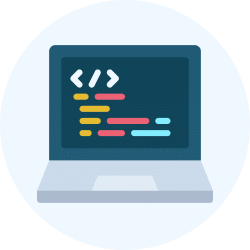Implementing ChatGPT for Customer Service | ChatGPT for Professionals - Software Development PDF Download
Train ChatGPT on Your Business Data and Knowledge Base in 2025
Training ChatGPT with your company's knowledge base is essential for delivering accurate and relevant customer support. However, this process often requires Python expertise and technical resources, making it complex for businesses without dedicated development teams.Fortunately, advancements in AI and no-code platforms have simplified the process, making it accessible to businesses of all sizes. Here’s how you can train ChatGPT with your company’s data:
Step 1: Collect Relevant Data
Gather a well-structured dataset that includes:Frequently Asked Questions (FAQs)
Product Documentation
Troubleshooting Guides
Customer Support Interactions
Step 2: Pre-process and Anonymize Data
To comply with data privacy regulations, ensure all collected data is cleaned and anonymized. Remove personally identifiable information (PII) while organizing the dataset for seamless training.Step 3: Format Data
Convert your data into a structured format suitable for AI training. Typically, this involves creating conversation-like exchanges with prompts and responses to improve contextual understanding.
Step 4: Fine-tune ChatGPT
Utilize OpenAI’s fine-tuning capabilities to train ChatGPT with your formatted dataset. This step ensures that the AI understands the nuances of your business, including industry-specific terminology and customer service protocols.Step 5: Evaluate and Iterate
Test the fine-tuned model by simulating real-world customer inquiries. Identify areas for improvement and refine the model through additional training data or adjustments.Simplifying ChatGPT Training with No-Code AI Chatbot Builders
For small and medium businesses, investing in an in-house AI development team may not be feasible. That’s where no-code AI chatbot builders like Botsonic provide a game-changing solution.Why Use a No-Code AI Chatbot Builder?
With a no-code platform, businesses can train and deploy AI-powered chatbots without coding expertise. Botsonic offers an intuitive and efficient way to create a ChatGPT-powered customer service chatbot with ease.Key Features of Botsonic:
A. Easy Training: Upload your anonymized, formatted data to fine-tune ChatGPT with your company’s unique information.
B. Customization: Design your chatbot’s conversation flow, appearance, and responses to align with your brand identity and customer support goals.
C. Performance Optimization: Use built-in testing tools to refine chatbot responses and enhance accuracy.
D. Seamless Integration: Connect the chatbot to multiple customer support channels, including websites, social media, and messaging apps.
E. Analytics & Insights: Monitor chatbot interactions and customer engagement with real-time analytics to improve performance continuously.
The Future of AI-Powered Customer Support
With AI-driven automation, businesses can reduce response times, enhance customer satisfaction, and scale support operations efficiently. Whether fine-tuning ChatGPT manually or leveraging no-code platforms like Botsonic, adopting AI-powered customer service solutions in 2025 is no longer a luxury but a necessity.|
8 videos|31 docs
|
FAQs on Implementing ChatGPT for Customer Service - ChatGPT for Professionals - Software Development
| 1. What are the benefits of integrating ChatGPT into customer service software? |  |
| 2. How can businesses train ChatGPT on their specific data and knowledge base? |  |
| 3. What are the potential challenges of using ChatGPT for customer service? |  |
| 4. How does ChatGPT handle complex customer queries that require human intervention? |  |
| 5. What is the cost implication of implementing ChatGPT for customer service? |  |















